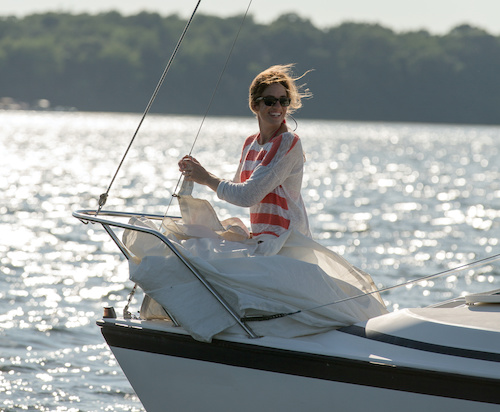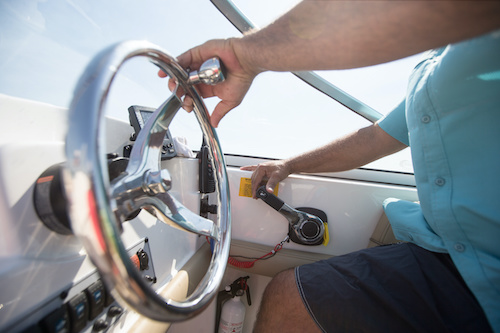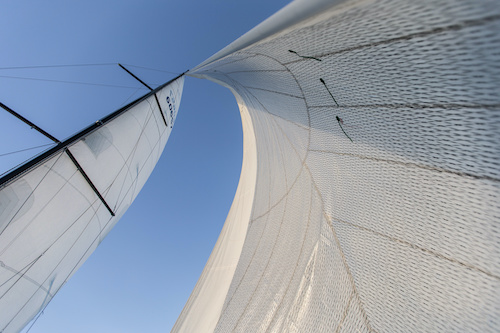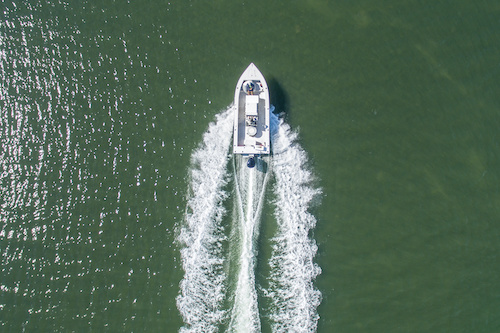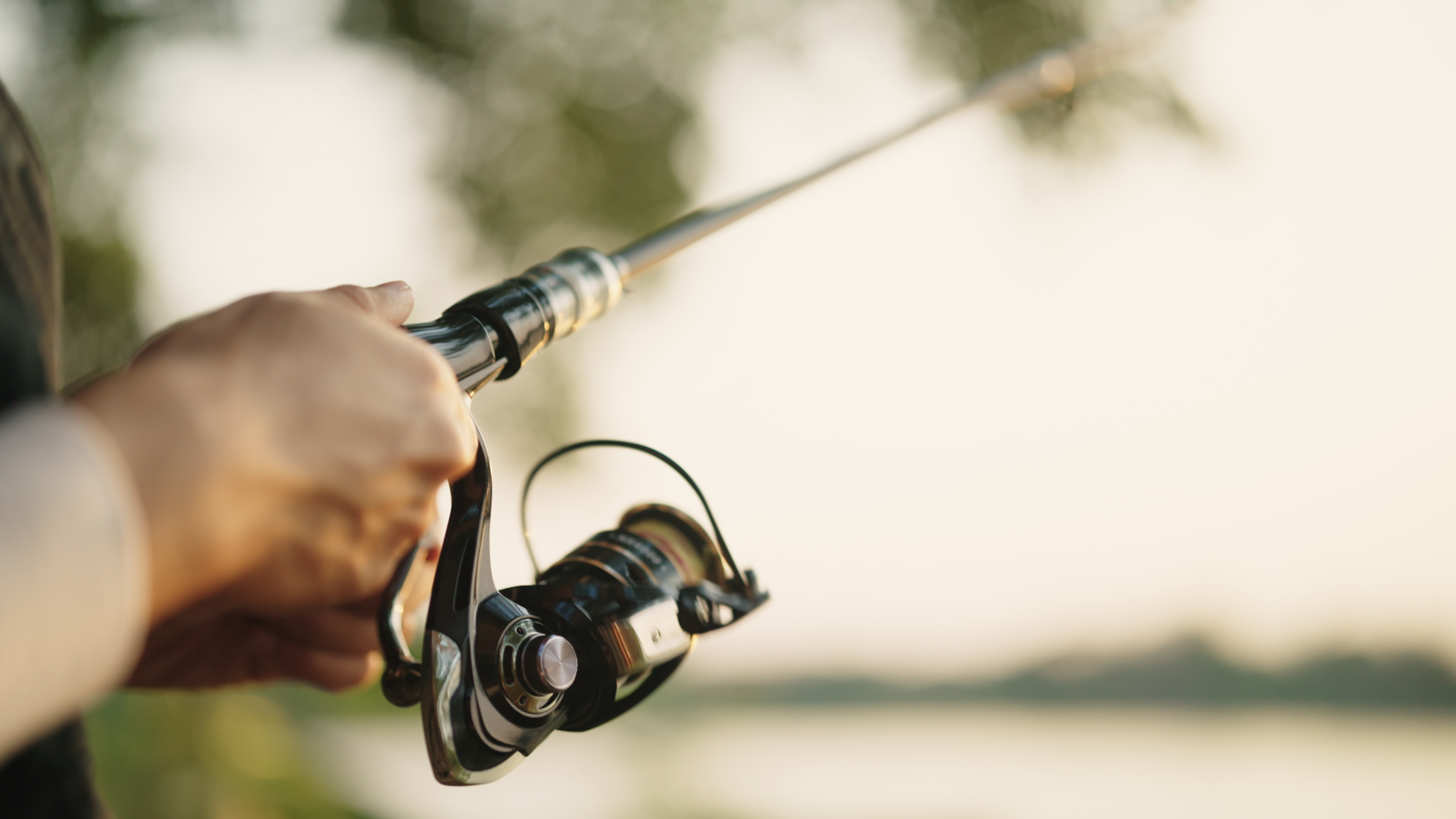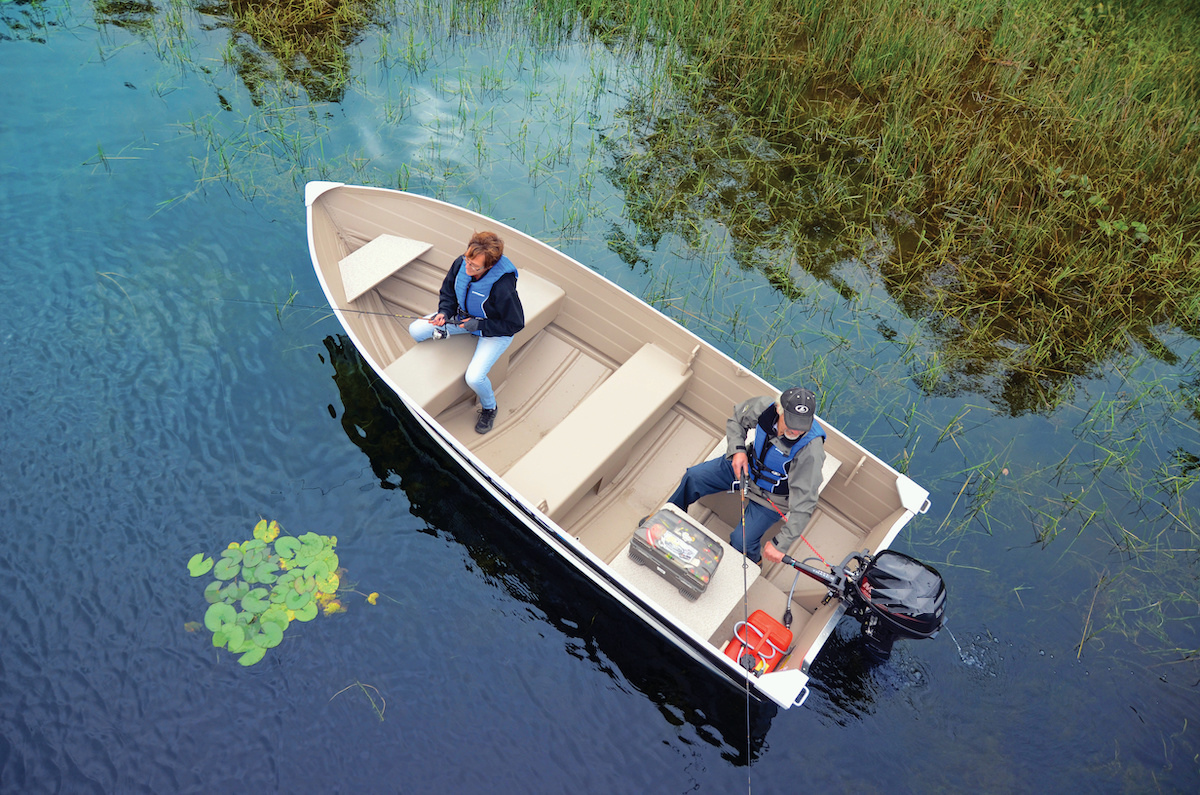Maneuvering a boat, especially when docking or loading a boat on a trailer, can be a lot more difficult than maneuvering a vehicle on land. Boats are subjected to outside influences including wind and current—sometimes both at once—which will affect how and where the boat moves.
As captain, it’s up to you to judge how these influences will come into play, and counteract them to maintain complete control of your vessel.
5 Tips for Operating Your Boat in Different Conditions
- Assess environmental forces, like wind or current, and try to position yourself up-wind or up-current to gain more control.
- Remember that you maintain the most control heading into the wind or current, as opposed to having the forces hit you from the stern.
- Before docking or retrieving your boat on a trailer, always observe your boat's drift for a minute or two.
- When docking in a strong current, beware of lines that hang from piers or piling, and then disappear into the water.
- When docking alongside a pier in a strong wind or current, simply pull the boat parallel to it and apply enough power to hold your position.
Controlling Your Boat With and Against the Wind
Whether it’s a strong blow or a gentle breeze, wind is probably the most common variable boaters need to deal with. No matter where or when you go boating, strong breezes are always a possibility. So a top priority when maneuvering a boat is always to assess the wind speed and direction, and consider how it might affect you prior to attempting any actions.
When savvy boaters first approach a dock, boat ramp, anchorage, or any other close-quarters maneuvering situation, they’ll begin gathering information with their eyes.
- A glance at a flag on a flagpole is a great wind indicator you can use to quickly assess direction and approximate speed.
- If there isn’t a flagpole close by, you can look at tree tops along the shoreline or at other boats to gain an appreciation for how the breeze might affect you.
Docking a Boat: Step-by-Step Guide
Controlling Your Boat in a Strong Current
Current may not have much of an effect in most lakes and reservoirs, but in many rivers and tidal waters it can have a huge impact. Unfortunately, just how strong a current is can be harder to assess than wind because you can’t always see it clearly.
- Look for items floating on the water’s surface which you can compare with solid objects anchored in place.
- Docklines drooping in the water which may be pulled in one direction or another are also a potential indicator.
- And the telltale ripples of a current hitting a piling can clue you in to the current’s direction and strength, as well.
10 Tips on How to Avoid Boat Collisions
Consider Your Boat's Build, Propulsion & Style
The most important thing to remember about maneuvering your boat in wind and/or current is that each and every boat is affected by these forces differently, and becoming accustomed with how they impact your boat in particular is key.
Boats like cabin cruisers with tall exterior surfaces or lots of canvass have a lot of “sail area” and will feel the effect of a breeze much more than craft like bass boats, which have a low profile and little area for the wind to grab. The same is true of models with little hull beneath the waterline versus those with keels or the deep running gear of inboard power systems.
Sailboats vs. Powerboats
The type of power system your boat has and its hull type have an impact, too.
- Outboard boats tend to pivot at the stern when subjected to a breeze, and you should expect the bow to swing around when hit by a gust. This effect will be strongest with flat-bottom hull designs (since the bow will skim right across the water’s surface) and mitigated somewhat by deep-V hull designs (since the hull has more lateral drag moving sideways through the water).
- Boats with deep keels, like sailboats and some trawlers will be affected the least by a breeze (assuming a sailboat’s sails are down!) since they have deep appendages that resist being pushed through the water.
Again, what this all boils down to is that you need to become familiar with your own specific boat and how the wind and current impact it while maneuvering. In some cases, spinning the steering wheel and applying a brief shot of power will be enough to counteract wind and current. In others, you’ll need to keep the engine in gear and constantly counter-steer against the prevailing forces.
Additional Tips for Operating Against Wind & Current
All of that said, there are a few tips we can pass on that will help you maneuver your boat regardless of what kind it is.
- After assessing the environmental forces you’re likely to encounter, plan ahead by positioning your boat up-current or up-wind of where you’d normally want it. Then, rather than fighting against these forces, let the wind and/or current push you into the proper position as you apply power to complete your maneuver.
- Remember that you maintain the most control heading into the wind or current, as opposed to having the forces hit you from the stern. Just as an airplane lands and takes off into the wind or a fish swims into a current, your input at the controls will have the greatest effect this way because water is flowing faster across your boat’s running gear or rudder. Plus, the force hitting the bow of the boat has a braking effect.
- Before attempting to dock or load a boat on a trailer in a current or on a windy day, stop your boat well clear of all solid objects and observe how it drifts for a minute or two. This will give you a better feel for exactly how those forces will be affecting your boat at the time, in that specific place.
- When docking in a strong current, beware of lines that hang from piers or pilings and disappear into the water. Current may be drawing them out across your intended path and if the boat’s propeller fouls a line, you’re likely to lose control.
- When docking alongside a pier in a strong current or wind, simply pull the boat parallel to it and apply enough power to hold your position. Then, you can use slight turns of the wheel to nudge the boat towards the dock in small increments without having to worry about forward or aft movement.
Like any aspect of handling a boat, the more you maneuver in wind and current the easier it will become. With time and experience you’ll learn how your boat reacts to these forces, and gain a better understanding of how to counteract them. And before you know it, you’ll look like a pro pulling up to the dock or loading onto the trailer—even when a strong breeze or heavy current makes it seem like a serious challenge.
Boat Handling Basics: 5 Ways to Improve Your Boating Skills
You May Also Like:
